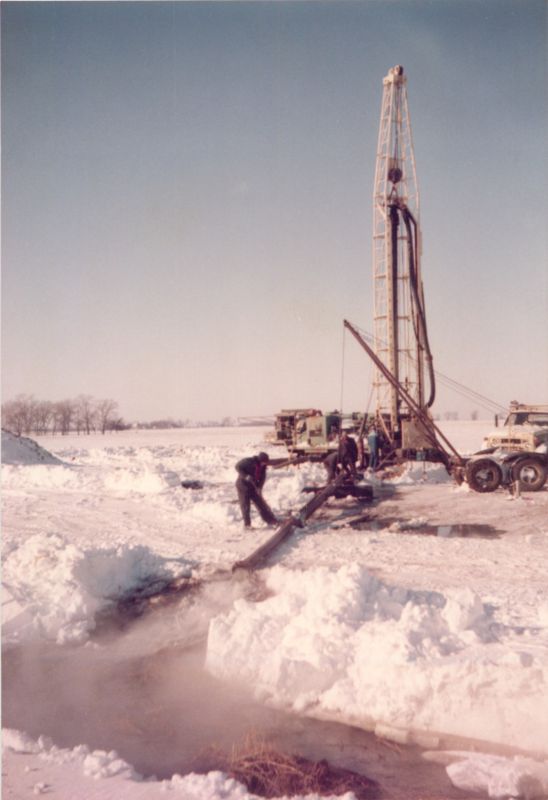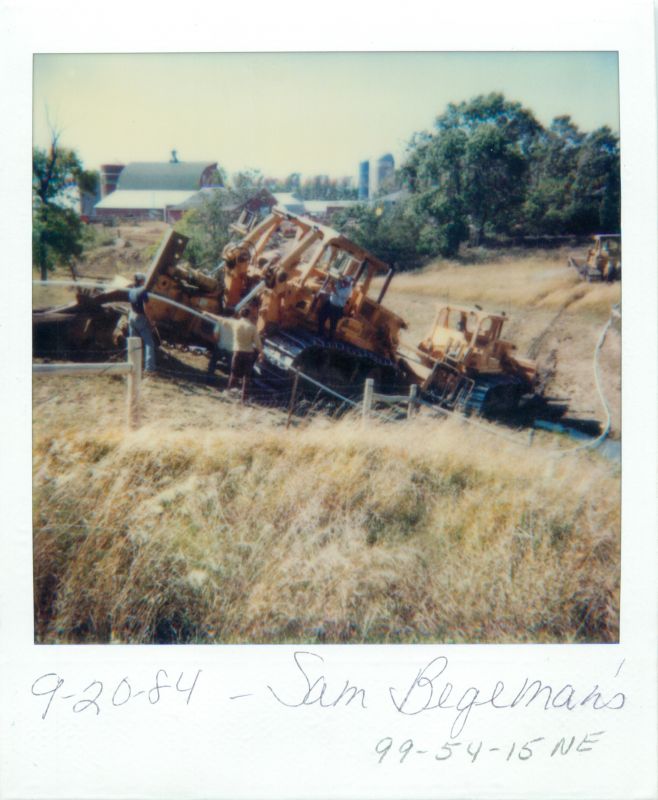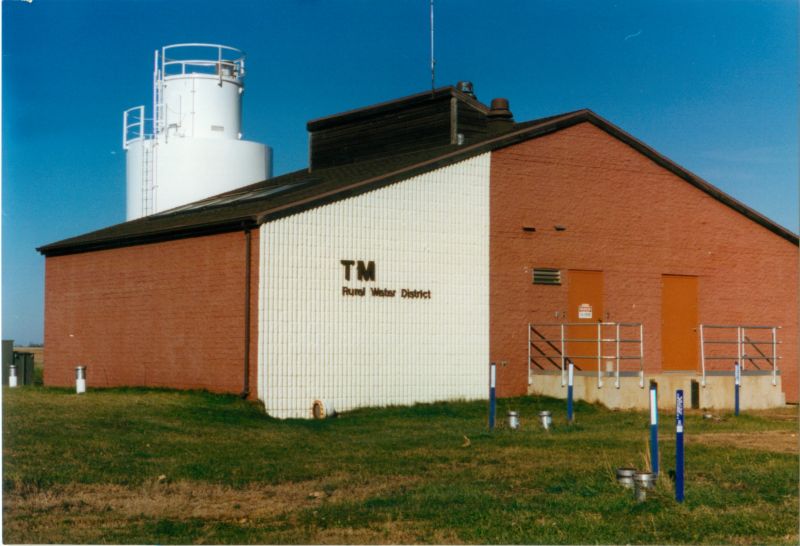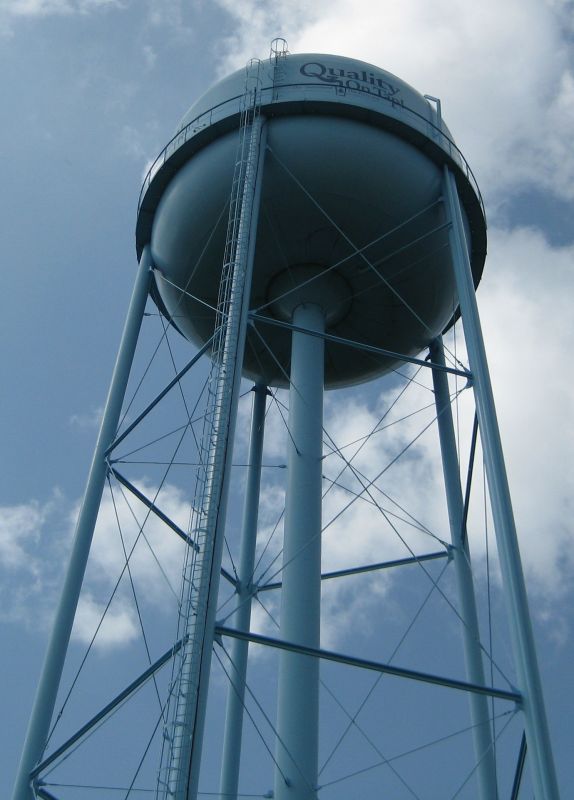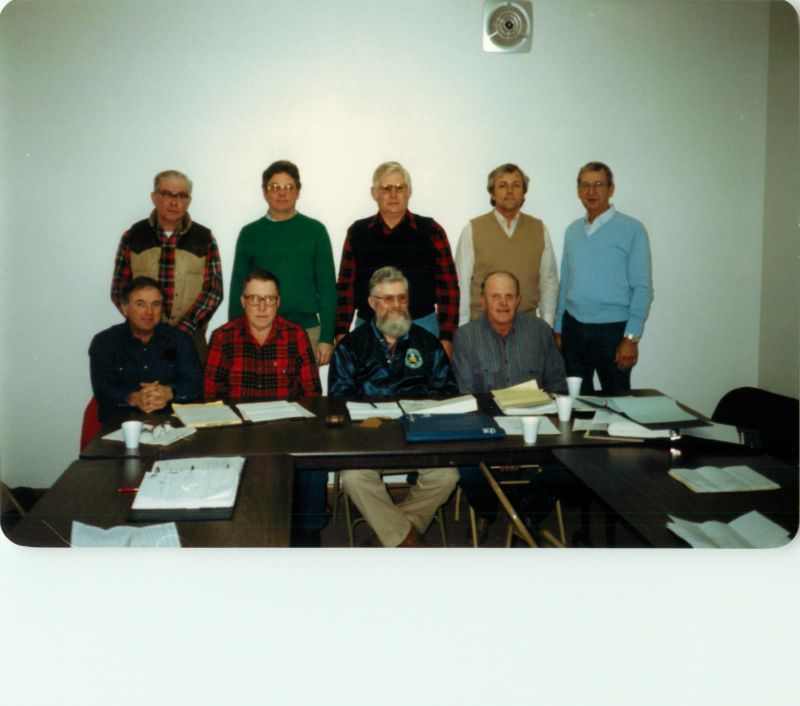A Little History about TM Rural Water District
In March of 1982 an informational meeting was held in Parker, South Dakota to determine the interest and feasibility of constructing a rural water system in the area. Interest quickly spread from just a couple of farmers looking for a safe and reliable source of water for their families and livestock to several hundred in addition to several small communities in the area. By January of 1983 the final signup meetings were held at towns throughout Turner and McCook Counties within the proposed District’s boundaries collecting 679 signatures in all. Soon after, a petition to organize a Water User District was sent to the South Dakota Board of Water and Natural Resources. In March of 1983 TM Rural Water District came into existence. In order to start construction the District secured financing in loans and grants totaling $8.22 million.
With the first water provided to users in 1984 ramping up to completion of the original project early in 1986, the TM Rural Water District had placed over 650 miles of water line to feed over 800 rural users; in addition to the communities of Canistota, Davis and Viborg. The original Water Treatment Plant utilized an iron and manganese removal system with a finished water softness of 7 to 8 grains hardness. The minimum charge which included 1,000 gallons of water was $25.00/month and any water consumed in excess of 30,000 gallons/month was charged at $.75/1,000 gallons. At that time the District supplied approximately 160 million gallons of water each year to the users on the system and over the years the amount of pipeline and users on the system continues to grow.
TM originally got the majority of its water from five wells drilled into the Dolton and Upper Vermillion Missouri (UVM) Aquifers. In some areas of the TM well fields the Dolton Aquifer actually overlies the UVM Aquifer. The Dolton Aquifer, named for its location close to the town of Dolton, South Dakota was the first source of water for TM and provides a portion of the water utilized by our customers today. The Upper Vermillion Missouri Aquifer is the other original source of ground water utilized by the District and is the larger of the two aquifers.
TM completed construction of a new 4.0 million gallons per day Water Treatment Plant in 2008. The Water Treatment Plant utilizes traditional lime softening treatment where raw water is mixed with a lime slurry which then reacts with the calcium and manganese in the water. The calcium, manganese and other solids bond to the lime and settle to the bottom leaving only clarified water that continues through the rest of the treatment process which includes carbonation, filtration and chloramination. The plant has 900,000 gallons of ground storage at the treatment facilities, which are distributed to the entire system by utilizing eight on-site high service pumps, four remote booster stations and four elevated water towers, which provide an additional 1,100,000 gallons of water storage.
Today the TM Rural Water District provides potable drinking water to 1,550 rural residences, 4 cities and one ethanol plant. Every year additional users are added onto the water system and due to its location adjacent to Sioux Falls, it is anticipated that the District will continue to grow in the coming years. The District produces and distributes over 700,000,000 gallons of water each year through 880 miles of distribution line.
All of this would never have been possible without the past and present TM Rural Water District Board of Directors. The Board’s responsibility is to create and modify the District’s policies and water rates as needed. Directors are all landowners within the boundaries of the District and take their jobs very seriously. While serving on the Board, these people continually perform selfless acts, which include the giving of time and expertise in order to run a business, which makes life better for everyone in the rural areas and communities that TM serves.
TM Rural Water District employs six full-time employees from three different communities in the areas that we serve. Whenever possible, TM attempts to buy our supplies and consumables locally and prefers to hire local contractors when the need arises. TM is thankful to have the ability to serve the communities and rural areas in which we live and hope that our service will continue to be a benefit to everyone within our District.
Original Funding
CDBG Grant $850,000
State Grant $50,000
State Loan $400,000
FmHA Loan $2,600,000
FmHA Grant $3,985,000
Sign Up Fees $335,000
Totaling $8,220,000


